British tourist scribbles his and his two daughters’ initials on wall of fresco at World Heritage-listed House of the Vestal Virgins in Pompeii – and has to pay for restoration work
A British tourist has been given a severe reprimand by Italian authorities after carving his initials and those of his two daughters into the wall of one of the most famous and protected ancient sites in Pompeii.
The 37-year-old made a total of five engravings – with their initials and the date – with a blunt object on the wall of the House of the Vestal Virgins, a UNESCO World Heritage Site.
Pompeii lies beneath Mount Vesuvius and was buried in a huge eruption in 79 AD, after which the city was preserved for posterity.
The House of the Vestal Virgins was once home to the virgin priestesses of the Roman goddess Vesta, who ruled over the home, the hearth, and the family.
It was somewhat damaged during World War II, but most of the deterioration has been caused by weathering over the centuries.
Still, tourists are impressed by the mosaics and frescoes that adorn the house, which was built nearly 2,000 years ago.
The graffiti that the tourist actually etched on the wall of the House of the Vestal Virgins in Pompeii, showing his and his daughters’ initials, JW, LMW and MW, alongside MLAW and the date 07/08/24
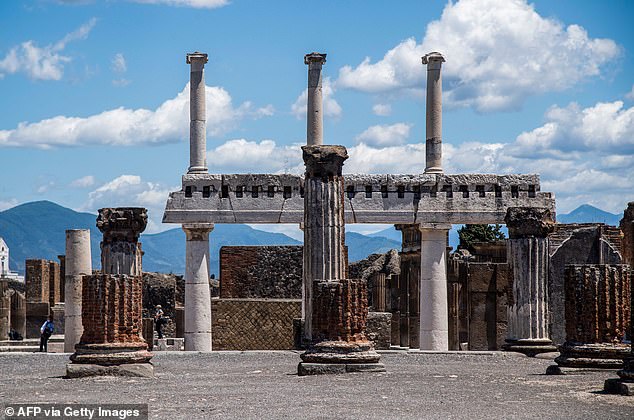
Pompeii lies beneath Mount Vesuvius and was famously buried and preserved for posterity by a massive eruption in 79 AD.
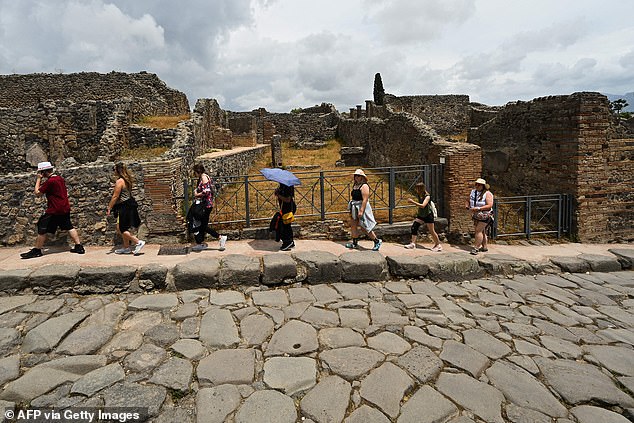
The 37-year-old tourist is likely to be asked to pay for repairs to the ancient site after apologising for etching his initials into the House of the Vestal Virgins
The new graffiti consists of the letters JW, LMW and MW, along with MLAW and the date 07/08/24, according to images of the location.
According to an Italian news outlet Italian timethe staff had noticed the man standing near the fresco section at the entrance to the House of the Vestrals and discovered the engravings after he had left.
Outraged by the graffiti, they identified the man and filed a complaint with the Public Prosecutor’s Office at the Torre Annunziata court. Corriere della Sera defeated.
When asked to explain himself, the man reportedly apologized and said he wanted to leave a record of his family’s visit to the historic site.
The man is now fined for damaging cultural heritageaccording to the Italian news agency ANSA and it is likely that he will have to pay for the restoration.
It is not the first time that British tourists have run into trouble at the beloved location, which is one of Italy’s most popular historical attractions.
In June, a tourist was caught carving his name into an ancient wall in Pompeii.
The man, who is from Kazakhstan, was reportedly caught red-handed while destroying a wall in the city, which lies beneath Mount Vesuvius and was buried by the volcano’s eruption in 79 AD.
The unnamed vandal was stopped while he was carving ‘Ali’ on light plasterwork in the House of the Ceii, an ancient villa probably belonging to the magistrate Lucius Ceius Secundus.
Italian authorities have said the man will have to pay for restoration work on the wall to remove the graffiti after he is reported to police.
It came a year after a tourist from Bristol was caught carving his and his girlfriend’s names into Rome’s 2,000-year-old Colosseum.
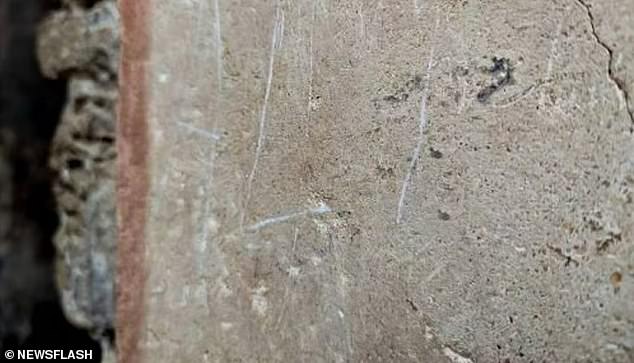
In June, an anonymous vandal was arrested while he was carving ‘Ali’ on light plasterwork in the House of the Ceii (photo)
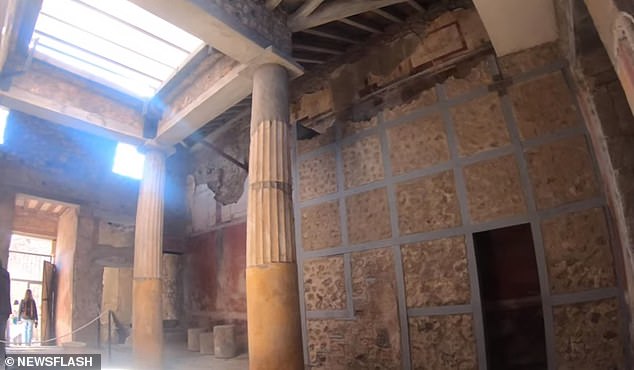
A general view of the House of the Ceii, an ancient villa that probably belonged to the magistrate Lucius Ceius Secundus
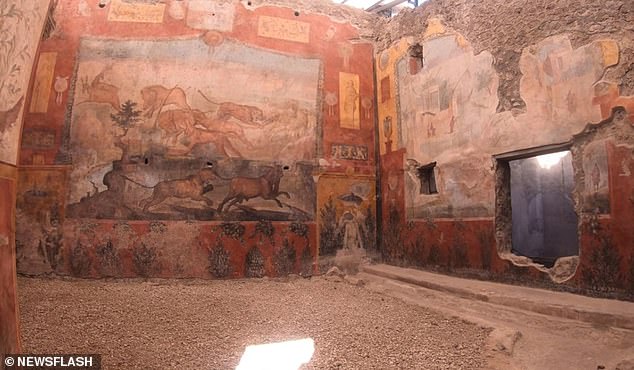
Photo shows wall paintings in the ancient Casa dei Ceii in Pompeii, Italy
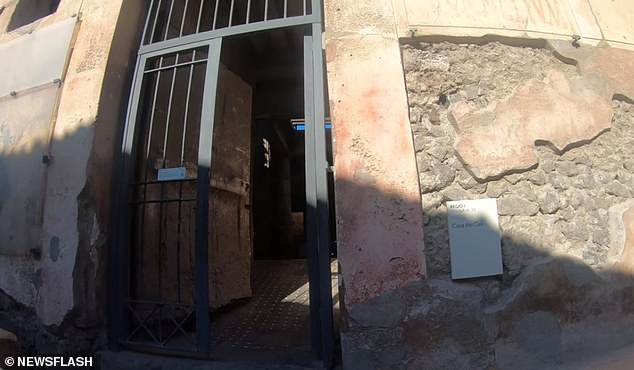
The entrance to the old villa, a popular spot for tourists visiting the site
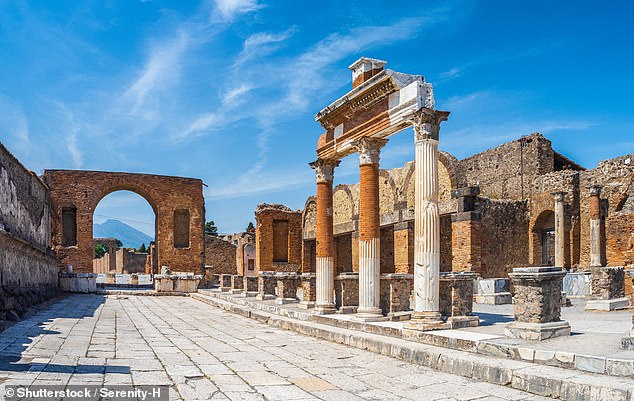
Pompeii lies beneath Mount Vesuvius and was buried by the volcano’s eruption in 79 AD. (file image)
The park director, Gabriel Zuchtriegel, said at the time: “An uncivilized act. Thanks to the new law, supported by Minister Gennaro Sangiuliano, the perpetrator of the crime will have to pay for the restoration of the wall.
‘Well done to the ministry staff and the Ales company who intervened quickly. Excellent cooperation with the police, whom we thank for their speed.’
The Archaeological Park of Pompeii says on its website that the House of the Ceii is “one of the rare examples of ancient dwellings from the Late Samnite period (2nd century BC).”
They also say: ‘Upon entering the house, the impluvium bath stands out, made of fragments of amphorae set aside. This is a common technique in Greece and can also be found in Pompeii, in the House of the Ancient Hunt.
‘The back wall in the small garden is decorated with wild animals, a very successful theme in the decoration of open spaces.
‘On the side walls are depicted Egyptian-style landscapes with animals from the Nile Delta, probably indicating a connection between the owner of the house and the worship of Isis, which was widespread in Pompeii in the last years of the city’s existence.’
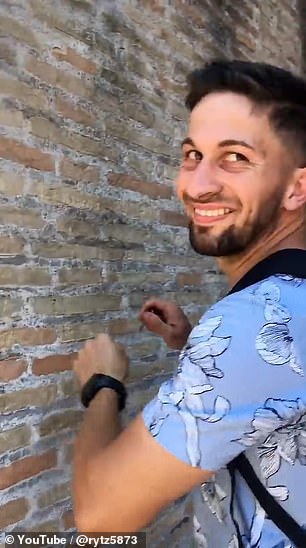
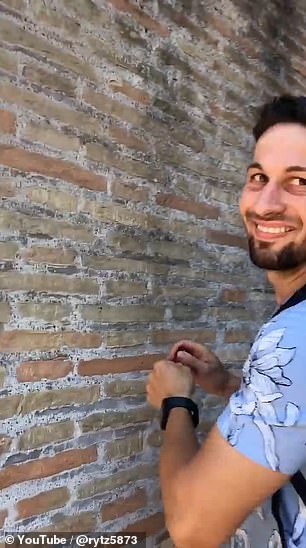
A bystander filmed Mr Dimitrov, a fitness instructor from Bristol, as he carved the names into the stone walls of the 1937-year-old building with a set of keys on June 23.
As the peak season approaches, Italian authorities will step up surveillance of the country’s landmarks following a series of senseless attacks on Italy’s beloved historic sites over the summer.
In the town of Herculaneum, which was also buried under ash when Vesuvius erupted in 79 AD, a tourist from the Netherlands was reprimanded for ‘signing’ an ancient wall.
In August, two tourists from Germany were arrested for defacing a historic monument in Florence with football graffiti.
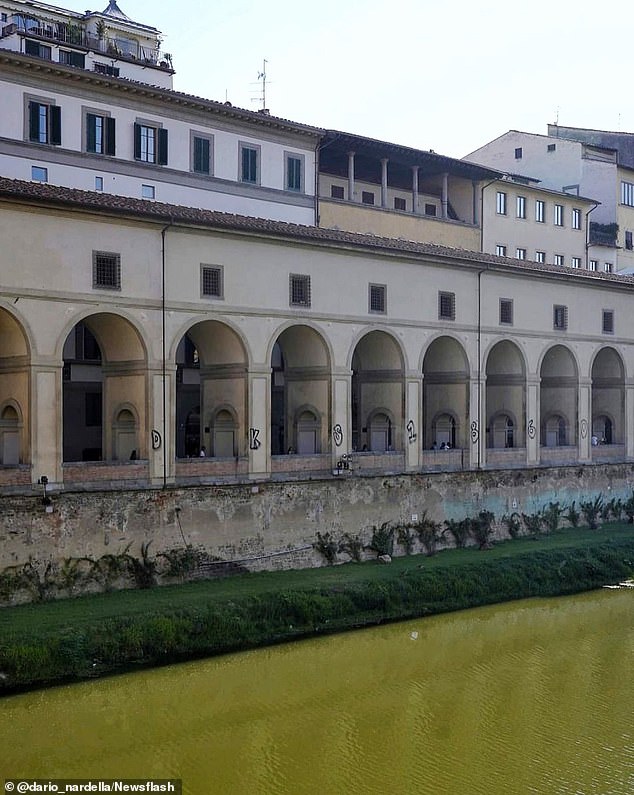
Locals are appalled by the disrespectful behaviour of tourists who have vandalised the corridor connecting the city’s beloved Uffizi Gallery to the Pitti Palace
The men reportedly wrote “DKS 1860” in black spray paint on the 460-year-old columns of Florence’s iconic Vasari Corridor.
The corridor connects the city’s magnificent Uffizi Gallery to the Palazzo Pitti and was originally built for the powerful Medici family.
And in a now famous shocking incident, a Bristol-based fitness instructor of Bulgarian descent was filmed laughing as he destroyed the wall of the Colosseum.
Ivan Dimitrov, 27, was on holiday in Rome with his girlfriend Hayley Bracey, 33, when he was caught carving the words ‘Ivan and Hayley 23’ into brickwork with a bunch of keys.
